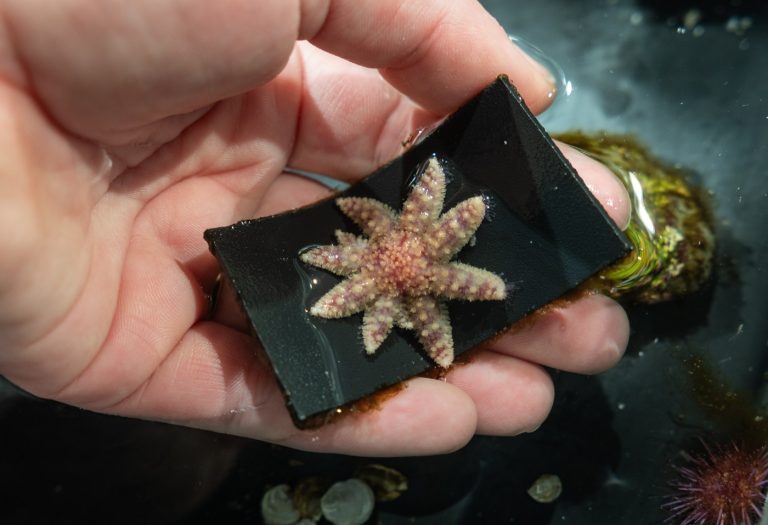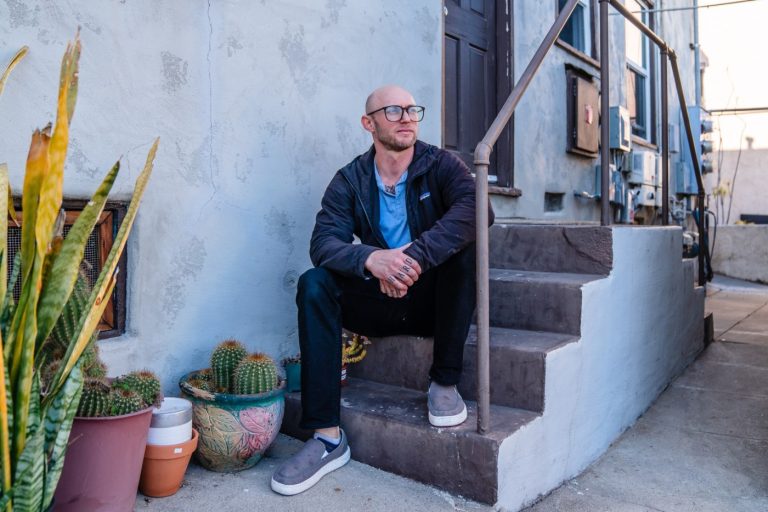Anyone who associates Daniel Craig with that blue-eyed, suave spy 007, or the brilliant and flamboyant “Knives Out” detective Benoit Blanc, will get their world rocked after seeing the Englishman’s radically different star turn in “Queer,” opening Friday in the Bay Area.
The actor smoothly ditches tuxes and car chases, dons a fedora and plunges headfirst into an obsessive, sweat-soaked love affair in the complex “Queer.” In a performance already earning Oscar talk, Craig portrays William Lee, a gay American expat and heroin addict who’s besotted with a handsome younger guy in 1950s Mexico City.
The role might seem like a major departure for the 56-year-old actor. It’s not. The versatile Craig’s been dipping his acting toe in and out of edgy indie fare for decades and winning raves for his efforts, which include gutsy performances as artist Francis Bacon’s troubled lover in 1998’s “Love Is the Devil” and as a construction worker involved in a smoldering relationship with a mother and also her daughter in 2003’s “The Mother,” amongst others.
So was it refreshing for the personable Craig to jump back into the indie sphere after dodging bullets and nasty supervillains as Bond for five outings?
“I mean I love working,” Craig explains the day after Julia Roberts recently hosted an invitation-only screening of “Queer” at San Francisco Museum of Modern Art, where Craig joined “Queer” director Luca Guadagnino onstage after for a conversation.
“The privilege of being able to do something like that, I suppose, is the emotion I would like to dig into there,” he elaborates in an interview in San Francisco. “I wouldn’t say it’s refreshing because I choose to be on movie sets now as opposed to having to be on them, which is a real (great) position to be in. So it’s important to me to be able to work with the people I want to work with, and find people like Luca.”
Guadagnino previously aced a big hit this year with the tennis love triangle “Challengers,” starring Oakland native Zendaya. He often finds actors he has worked with — such as Craig, Tilda Swinton, Timothee Chalamet, Dakota Johnson and more — eager to collaborate again with him. That includes screenwriter Justin Kuritzkes, who wrote “Challengers” and then “Queer.”
Set in 1950s Mexico City, “Queer” takes as its basis Beat Generation icon William S. Burroughs’ semi-autobiographical novella. For decades, Guadagnino has been haunted by Burrough’s elliptical story about two men on a soul search for contact, understanding and later a potent plant that leads to a sensual dance between them.
“I think because I exposed myself to the book when I was quite young, it must have engraved into my consciousness,” he said. Thirty-five years later, he found the right “traveling companions,” including Craig and production designer Stefano Baisi, to embark on that cinematic journey.
Reading “Queer” left an enormous mark on Guadagnino and “influenced my sense of being as a person, meaning that the idea of contact is basically everything for me.”
To replicate that sense of an intimate connection — a trademark element in Guadagnino’s films — his actors needed to be willing to commit 100 percent not only to the story, but to the director and each other.
Craig surrendered himself over to the role of searcher William who even persuades his more reserved lover Eugene Allerton (Netflix’s “Outer Banks” star Drew Starkey in a breakout performance) to venture into the rainforest so they can find the yage vine, used to make the psychedelic drug ayahuasca.
Craig’s role requires not just nudity but for him to show a raw vulnerability; and it features a series of erotic carefully choreographed scenes between him and Starkey.
To got fully into his character, Craig totally emptied himself, which allowed him to “feel the things you’re supposed to feel.”
“I always strive to do that when I work,” he said. “But on this set with Luca all ego has to stay at the door. You’ve got beautiful actors in front of you, Drew Starkey not the least of all.” (The striking singer/songwriter Omar Apollo also appears in a brief sexual scene.)
Craig sings the praises of the 31-year-old Starkey and enjoyed partnering with him onscreen. (In real life, Craig’s married to Oscar-winning actor Rachel Weisz.)
“For somebody who doesn’t have to say an awful lot in the movie, he instills so much. You’re really just reacting to that.”
Putting in the hard work beforehand allows an actor to show up and then deliver on day one on the set like that, he adds.
“You know what the story is. We’ve all done that work. We’ve all just sat down and talked about it, and lived it and breathed it for as long as we possibly can. And when you get to the set, you’re just ready to go. I’m probably oversimplifying it. But it’s like, just empty yourself.”
While “Queer” centers on the complicated sexual and emotional relationship between two men at a time when being out could prove dangerous, Guadagnino and Craig see the film as resonating beyond queer audiences since it touches on universal themes about love and identity.
“I think the movie is very specific,” Guadagnino said. “It’s very much about these two and about that kind of sexuality. But it must be seen as a movie that is a quest for everybody to relate upon, which is the fear of contact and the eternity of love. I like the idea that once Allerton looks at Lee and Lee looks back at Allerton in the outdoor moment, then it starts and it’s never going to be interrupted.”
When Craig first met with Guadagnino, they discussed how “Queer” is about the timeless journey to find love.
“In this movie with Luca, and I’m sure with other movies (of his) as well, he’s trying to put on screen those moments that are so universal, so deeply ingrained in everything,” Craig said. “Because what else is there? There is only love.”
The film also called for creating a specific time and place — 1950s Mexico City — while reflecting the film’s themes.
Enter Baisi, who for his first major production design gig, listened to what Guadagnino envisioned and then re-created it. Great pains were taken to ensure authenticity; even a calligrapher was brought in to replicate Burroughs original manuscripts shown in the film’s opening moments. Baisi He also researched architectural styles and building facades from the period, and embarked on the same journey the characters traveled, only he did it backwards, from Quito in Ecuador to Panama City and then Mexico City.
Much of the film was shot in the sprawling Cinecittà Studio complex in Rome. Some filming was done on location in South America.
The heightened use of colors in the film are intended to accentuate the moods and feelings of desire and longing of the characters.
All elements of the film play critical roles – including a wide-ranging soundtrack that swings from Nirvana to Prince — to punctuate the core theme about repressing the “possibility of embracing your true self,” Guadagnino said; of “… embodying our desires fully because I’m not queer, I’m disembodied.”
“For me the secret of that is not about the social constricts, but more about the inner repressions that animates these characters and, in general, the nature of people, I would say,” he added.












